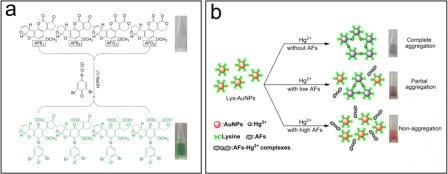
Systematic analytical methods for the determination of aflatoxins, a toxic compound often in food, have been developed recently by Du Bibai, a UCAS PhD candidate, who is co-supervised by Prof. He Yujian and Prof. Yang Jingkui. The works were just reported by two peer-reviewed international journals in the field of analytical chemistry in detail. The reviewers hold that the novel methods have some significant merits for rapid detection of aflatoxins, particularly in developing countries, where high-end immunoassays and immunosensors might not be available.
One of the analytical methods was designed based on the reactions of the lactone ring structure in aflatoxins, where colorless aflatoixns transform into green-colored indophenol products through the reaction with sodium hydroxide and 2,6-dibromoquinone-4-chloroimide (DBQC) successively, allowing selectively determining aflatoxins by UV-Vis spectrophotometer. The work has been published in Analytical Chemistry ( http://pubs.acs.org/doi/abs/10.1021/acs.analchem.5b04720 ).
Another analytical method exploits the Hg(II) ion-mediated aggregation of lysine-functionalized gold nanoparticles, where the gray to red color change of solutions of gold nanoparticles occurs as afltoxins prevents the Hg(II) induced aggregation of Lys-AuNPs. This also allows the quantitation of AFs by UV-Vis spectrophotometry. This work has been published in Microchimica Acta (http://link.springer.com/article/10.1007/s00604-016-1786-7 ).
Both of the methods can simultaneously quantify total AFs without using antibody which is advantageous over other screening methods which require the use of antibodies
The works are supported by NSFC grant etc.